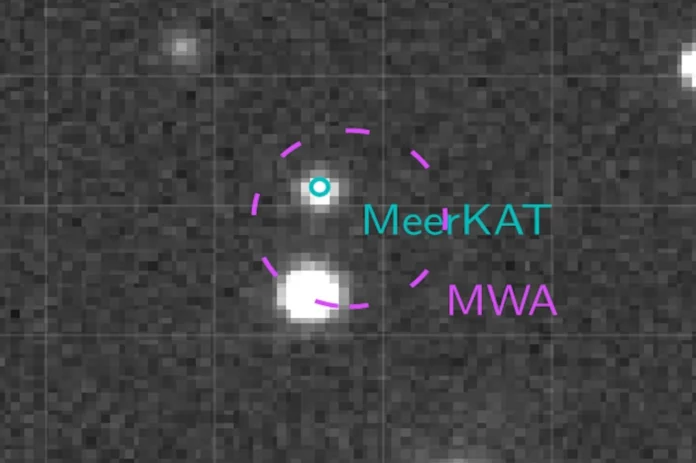For the past 10 years, a steady pulse of bright energy has been emitted from the vicinity of the Milky Way, occurring every three hours and lasting about a minute. Astronomers believe they have identified the source of the signal, but this discovery has brought with it a new mystery – one they now claim to have solved as well.
A team of researchers from the Curtin Node of the International Center for Radio Astronomy Research (ICRAR) first came across the radio signal while reviewing archived data from the Murchison Widefield Array (MWA) radio telescope located in Western Australia. The energy pulse is the longest radio transient ever detected, with most signals appearing on timescales of tens to thousands of seconds.
Long-period radio transients are relatively new, with several having been discovered recently. Celestial objects with a changing magnetic field, such as the Sun or Jupiter, can emit radio waves. Those that occur on shorter time scales are known as radio transients – sudden, short-lived bursts of energetic radiation that are often caused by rotating neutron stars (the collapsed core of a dead star).
“Long-period transients are very exciting, and in order for astronomers to understand what they are, we need an optical image,” said Natasha Hurley-Walker, ICRAR associate professor and lead author of a paper on the discovery published in The Astrophysical Journal Letters. “However, when you look at them, there are so many stars that it looks like the movie 2001: A Space Odyssey”. “My God, it’s full of stars!”.
Fortunately, the newly discovered radio transient object, GLEAM-X J0704-37, was not hiding behind the stars. Instead, it was discovered on the outskirts of the Milky Way at a distance of about 5,000 light-years in the constellation Pupus, a region that is slightly less congested than the rest of the galaxy. “Our new discovery lies far from the galactic plane, so there are only a few stars nearby,” Hurley-Walker added.
With a clear image of the signal, the discovery team used the MeerKAT telescope in South Africa to pinpoint the location of the radio waves to one particular star. Using another telescope, the SOAR Observatory in Chile, the researchers measured the star’s spectrum, determining that it was a dwarf star M, also known as a red dwarf star.
Although the team solved one mystery by finding the source of the signal, they had another mystery waiting for them. “An M dwarf by itself cannot generate the amount of energy we are seeing,” says Hurley-Walker. “M-dwarfs are low-mass stars that have only a fraction of the mass and luminosity of the Sun. They make up 70 percent of the stars in the Milky Way, but none of them are visible to the naked eye.”
Instead, the data suggests that the M dwarf was in cahoots with another type of star, and they both worked together to create the repeating radio burst. The M dwarf is likely in a binary system with a white dwarf, the remnants of a star that has exhausted its nuclear fuel and shed its outer layers. “Together, they feed the radio emission,” says Hurley-Walker.
Although MWA’s archived data showed that the radio junction had been active for 10 years, it may have been emitting bursts of energy for even longer but had gone undetected. The team of authors of the discovery wants to conduct further observations of GLEAM-X J0704-37, as well as analyze the data to possibly find longer radio transients. Perhaps there are many more strange cosmic sources pulsating with energy in the Universe.









